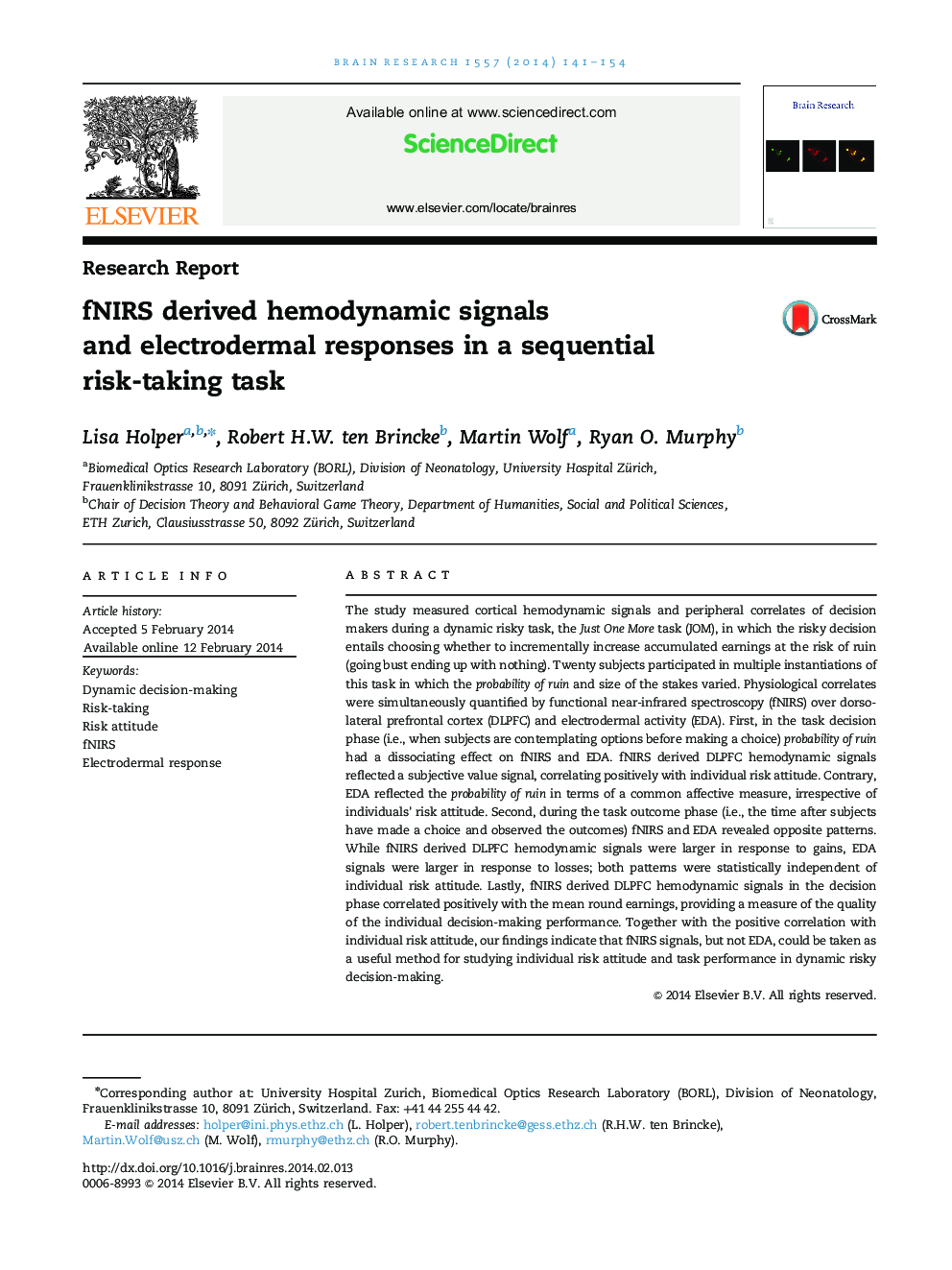| کد مقاله | کد نشریه | سال انتشار | مقاله انگلیسی | نسخه تمام متن |
|---|---|---|---|---|
| 6263399 | 1613882 | 2014 | 14 صفحه PDF | دانلود رایگان |

- Hemodynamic and peripheral signals of SDT were quantified using fNIRS and EDA.
- fNIRS and EDA showed dissociated patterns during decision and outcome processing.
- fNIRS showed a positive correlation with individual risk attitude.
- fNIRS showed a positive correlation with the round results.
- fNIRS, but not EDA, indicated individual risk attitude and task performance.
The study measured cortical hemodynamic signals and peripheral correlates of decision makers during a dynamic risky task, the Just One More task (JOM), in which the risky decision entails choosing whether to incrementally increase accumulated earnings at the risk of ruin (going bust ending up with nothing). Twenty subjects participated in multiple instantiations of this task in which the probability of ruin and size of the stakes varied. Physiological correlates were simultaneously quantified by functional near-infrared spectroscopy (fNIRS) over dorsolateral prefrontal cortex (DLPFC) and electrodermal activity (EDA). First, in the task decision phase (i.e., when subjects are contemplating options before making a choice) probability of ruin had a dissociating effect on fNIRS and EDA. fNIRS derived DLPFC hemodynamic signals reflected a subjective value signal, correlating positively with individual risk attitude. Contrary, EDA reflected the probability of ruin in terms of a common affective measure, irrespective of individuals׳ risk attitude. Second, during the task outcome phase (i.e., the time after subjects have made a choice and observed the outcomes) fNIRS and EDA revealed opposite patterns. While fNIRS derived DLPFC hemodynamic signals were larger in response to gains, EDA signals were larger in response to losses; both patterns were statistically independent of individual risk attitude. Lastly, fNIRS derived DLPFC hemodynamic signals in the decision phase correlated positively with the mean round earnings, providing a measure of the quality of the individual decision-making performance. Together with the positive correlation with individual risk attitude, our findings indicate that fNIRS signals, but not EDA, could be taken as a useful method for studying individual risk attitude and task performance in dynamic risky decision-making.
Journal: Brain Research - Volume 1557, 4 April 2014, Pages 141-154